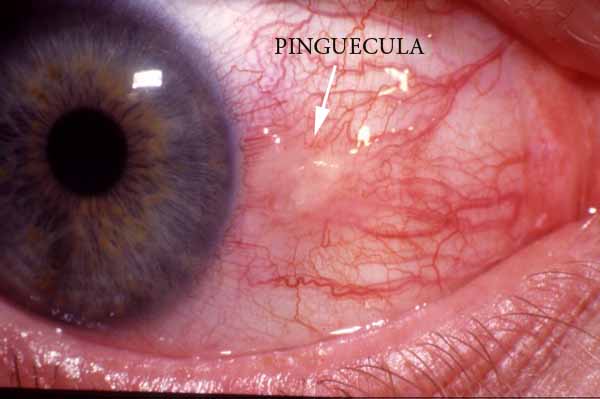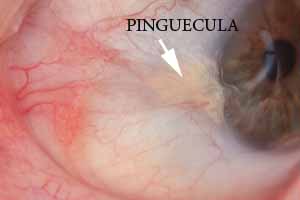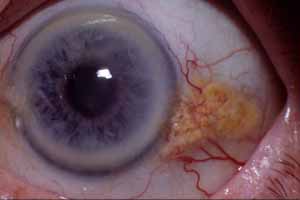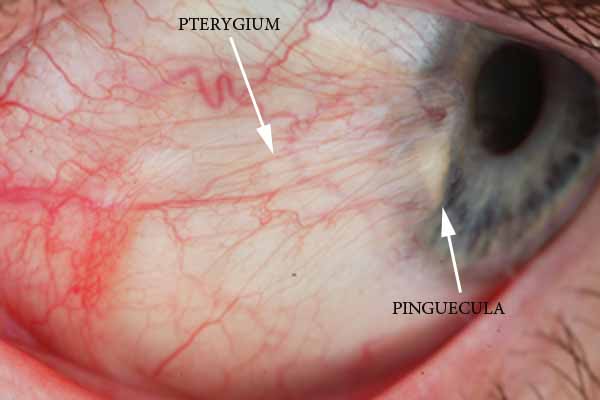Do I have a pterygium or do I have a pinguecula?
Pterygium
This is a condition that affects up to 10% of the Australian population over the age of 18.
Although I have seen this condition in children under the age of 10, this is exceptionally unusual. Generally it develops in teenagers or older persons.
In ninety-nine out of a hundred people they are present on the nose (nasal) side of the white of the eye in the horizontal meridian with only one in a hundred on the ear (temporal) side of the eye. It is not called a pterygium until it crosses over onto the crystal window (cornea) i.e. it is over the distinct junction (limbus) between the white of the eye (sclera) and the coloured part of the eye (iris).

Occasionally a person may have both a nasal and temporal pterygium on the same eye and in fact, unlucky people can have four pterygia, nasally and temporally on both eyes! Generally this condition is slowly progressive with the pterygium growing further over the cornea towards the line of vision. This will occur over years and eventually it will stop growing but no one can predict where or when this will occur.
Pinguecula
The very common condition which is frequently misdiagnosed as a pterygium, is a pinguecula. This is a yellowish lump, frequently with prominent blood vessels leading to it and once again is most commonly on the nasal side of the eye although it is possible to have it on the nasal and temporal side of the eye and it is usually present on both eyes.



However, it is strictly located over the white of the eye and does not cross onto the cornea, or over the coloured part of the eye. A pinguecula may be found in approximately 40% of the Australian population.
So the defining feature to differentiate these two very common conditions is whether the lump extends onto the cornea (or over the coloured part of the eye).
It is quite likely that someone who has a pinguecula may later on develop a pterygium but this does not mean that one changes into the other, it is just that both are strongly related to sunlight exposure and the pterygium growing onto the cornea drags the pre-existing pinguecula with it.

It is possible that some or many members of the same family may develop a pterygium but this rarely means that it is inherited, rather than all the members have been exposed to excessive sunlight.
There are some other rare conditions that may be confused with a pterygium but the diagnosis in these cases will require an eye health professional to diagnose. Pterygium and pinguecula should be able to be diagnosed by the person themselves or by a friend or relative. Careful attention to the details above with a focussed light source and the person with the pterygium looking in the direction away from the pterygium should make the diagnosis evident.
However, ultimately the diagnosis will need to be confirmed by an eye health professional.
